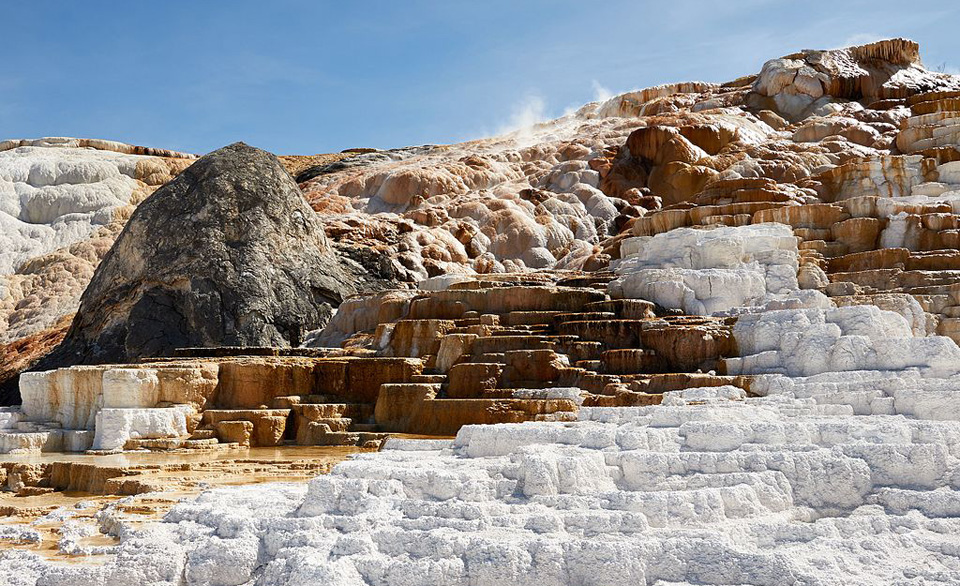
“Everybody needs beauty as well as bread,” said John Muir, naturalist, philosopher and founder of the Sierra Club, “places to play in and pray in, where nature may heal and give strength to body and soul alike.” Muir and President Theodore Roosevelt were two of the earliest advocates for the establishment of national parks.
An earlier president, Abraham Lincoln, signed the Yosemite Grant in 1864—for the first time, the federal government setting aside parkland for preservation and public use. This protected landscape includes iconic American features such as Bridalveil Fall, Half Dome Rock, and some of the oldest trees on Earth, the giant sequoias. Gradually other parks were established as well.
The preservation of our most magnificent and meaningful places for the purpose of public appreciation and recreation is a uniquely American idea. In 1872, Yellowstone National Park was established to be “dedicated and set apart as a public park or pleasuring-ground for the benefit and enjoyment of the people.”
Protecting the hallowed ground in Yosemite Valley set the precedent for the creation of all of the national parks. And in 1890, largely in part due to the activism and lobbying of John Muir, the Yosemite Valley came under official federal protection as Yosemite National Park.
By 1916, the Department of the Interior was managing a large portfolio of protected landscapes across the country, but it had no official or unified leadership. Action from journalists, the business community and nature conservationists led to the establishment of the National Park Service (NPS) by Congress.
The NPS mission is to “conserve the scenery and the natural and historic objects and wildlife therein, and to provide for the enjoyment of the same in such manner and by such means as will leave them unimpaired for the enjoyment of future generations.”
In the tried and true American spirit, government was perceived to function best when partnered by private, civic initiative. So on December 18, 1967, 50 years ago, by Public Law 90-209, the 90th Congress, in S. 814, passed a Congressional Charter of Incorporation to the National Park Foundation (NPF) as the official charitable partner of the NPS.
The Foundation, in partnership with the NPS, enriches America’s national parks and programs through private support, safeguarding our heritage and inspiring generations of national park enthusiasts. Lady Bird Johnson, wife of then-President Lyndon B. Johnson, was an early advocate for the National Park Foundation, along with multimillionaire-philanthropist Laurance Rockefeller. Lady Bird Johnson’s commitment to beautifying our country lives on in the actions of conservationists nationwide who work to protect our parks.
Private citizens previously did not have a clear way to directly support our national parks, be it through financial contributions or land donation—making their expansion and further protection a challenge for the NPS to take on alone.
The creation of the Foundation led to the immediate protection and enhancement of some of our most treasured and historic places. For example, within the first 10 years, NPF established grants to protect President Theodore Roosevelt’s home in Sagamore, Long Island; made emergency land purchases to save Gettysburg, Pennsylvania, the Blue Ridge Parkway, and Muir Woods; supported a grant in the Rocky Mountain Range; and established a fund to enhance the Lyndon B. Johnson Memorial Grove along the Potomac River.
The NPF focuses on promoting programs that protect precious landscapes and wilderness, historical sites, and places of cultural significance. It works to keep trails clear through its Active Trails program, partners with collaborators ranging from community organizations up to the White House to get kids outdoors through Every Kid in a Park, and raises and allocates critical funds to keep our national parks safe. It counts on the active ongoing support of fellow park lovers to continue enhancing our national parks for years to come.
Recently, under a White House administration hell-bent on privatizing the patrimony of the American people—our lands, our educational system, our public services, etc.—national parks and monuments are falling under dire threat. Entrance fees to the parks are being raised to a level that will exclude families of more modest means. President Trump is seeking to cancel the latest national parks designated under President Obama as part of a racist campaign to obliterate his predecessor’s achievements.
Trump and his pro-corporate cabinet members are also trying to severely shrink the acreage in national monuments—the latest two in Utah, Bears Ears and Grand Staircase-Escalante, reduced to a fraction of their previous expanse, thus opening these public lands to oil, gas and mineral exploration and extraction, and the pollution that comes with it.
The National Park Service is consistently rated among the most popular federal government programs. Under the present administration, NPS employees have begun protesting against staff reductions and reassignments, the alteration or removal of scientific information provided at the parks and on websites, the introduction of literature in NPS bookstores that promotes creationism and other religious ideas. There is still a powerful need for private citizen involvement in the management of our national parks system.
The NPF website can be found here.
Source: National Park Foundation and other combined sources.










